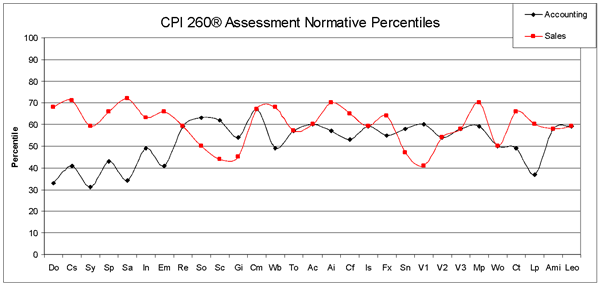ATD Blog
Personality Type and Talent Acquisition
Thu Jan 07 2016

There are a many ways in which personality assessments can—and should—be used to help hire the right people. Assessments can contribute to good hiring decisions, and organizations can leverage assessments as a starting point for developmental conversations once a hiring/promotional decision has been made.
Personality has been defined by N. Brody and H. Ehrlichman (1998) as “those thoughts, feelings, desires, intentions, and action tendencies that contribute to important aspects of individuality.” Personality comprises the psychological preferences, temperaments, and predispositions that, in part, motivate and govern people’s behavior, and one of the goals of psychology is to understand these stable traits and effectively measure them through personality assessments.
Determining the Right Personality Assessment
When considering the use of personality assessments in selection for hiring, remember that not all instruments are created equal—nor are they created for the same purpose. For instance, the Myers-Briggs Type Indicator® (MBTI®) is intended to generate self-insight and spur development in employment contexts (such as team building and conflict management), and has been validated and shown to work very well in that function. However, it was not designed as a predictor of performance and, therefore, is not recommended for use in selection for hiring.
Any personality assessment used in selection applications must, at a minimum, demonstrate adequate reliability and validity as related to important job-related constructs such as job performance. If a test is used to select individuals for employment, there must be valid evidence to support the accuracy and “job relatedness” of inferences made on the basis of assessment scores. Further, the issue of positive self-presentation or “faking” responses also contributes to the utility of the assessment.
In contrast to the MBTI’s design, the California Psychological Inventory™ (CPI™) was constructed to be used in both selection and development contexts. The CPI was designed to offer a picture of an individual’s personal and work-related characteristics, motivations, and thinking styles, as well as how they manage themselves and deal with others. In other words, it can provide a view into their strengths and developmental opportunities.
Through its empirical development process, it minimizes concerns about faking responses because the “correct” answers aren’t readily obvious to users. However, it’s worth noting that it is still possible for applicants to fake “good” responses when they are motivated to get a job.
Predicting Job Performance
Conceptually, there is strong reason to believe that stable personality traits (such as those measured by the CPI) can help predict subsequent job performance. In fact, a multitude of validation studies have demonstrated that this is the case. Further, such assessments have been shown to provide additional predictive value when paired with commonly used cognitive ability assessments.
To determine the most appropriate and applicable assessments and scales, you must first identify the knowledge, skills, and abilities required by the position. For example, how would you describe a typical accountant? Most people think of accountants as conventional and reserved. How about a typical salesperson? Usually, we think of salespeople as outgoing.
In fact, though, the CPI instrument has shown that sales professionals generally are more assertive (Dominance scale), enterprising (Capacity for Status scale), outgoing (Sociability scale), spontaneous (Social Presence scale), optimistic (Self-acceptance scale), cheerful (Well-being scale), entrepreneurial (Achievement via Independence scale), and comfortable with managerial authority (Managerial Potential scale). Accountants, on the other hand, are more likely to be expected to conform to societal norms (Social Conformity scale), exhibit emotional stability (Self-control scale), and value privacy (Orientation Toward Others Vector 1). The following chart demonstrates the considerable differences in personality profiles across these occupations.
Figure 1. Accountant and Sales CPI 260® Assessment
Normative Percentile Profile

Why Do Different Personality Traits Support Different Job Functions?
Why are there such stark differences between, say, accountants and sales people? The answer is relatively simple: the duties and responsibilities of each occupation (in this case, accountant vs. salesperson) require people in those roles to behave in specific ways for successful performance.
A person who is quiet and reserved (an accountant) may be less effective (and possibly less engaged) performing duties typically associated with a sales position, such as presenting in front of large groups, entertaining prospective clients, or networking. Meanwhile, a person who is outgoing and ambitious (a salesperson) may be uncomfortable with the solitude, structure, and discipline required for preparing accounting records. In general, research confirms that workers are most effective when their personality characteristics match the job requirements.
Just How Accurate Are These Measures?
--------------------------------------
To determine the predictive value of personality traits, a recent study by M. G. Anderson, “The Validity of the CPI 260® as a Predictor of Performance Across Managerial Occupations,” investigated the relationship between the scales of the CPI 260 tool and the performance dimensions of the Benchmarks® 360-Degree Feedback Tool. Eleven personality profiles, consisting of the most predictive CPI 260 scales for each job, were developed for sales executives (including CPI 260 scales of Social Presence, Amicability, Empathy, and Insightfulness) and accounting managers (including CPI 260 scales of Self-Control, Social Conformity, Communality, Well-Being, and Amicability).
The research found that these relationships are virtually the same as the relationship between weight and height for U.S. adults, higher than the relationship between sleeping pills and short-term improvement in chronic insomnia, and far above the correlation between job interviews and job performance. In other words, the personality profile–job performance relationship illustrated in this study is stronger than well-accepted medical procedures and a common alternate method of employee selection.
Bottom line: Personality assessments can be a highly effective means of identifying the right candidates for a position. However, the successful use of personality assessments for this purpose hinges on a few crucial factors. Specifically, you must ensure that you have chosen an assessment that was designed and has been validated for purposes of selection. What’s more, have you sufficiently determined the core competencies that will be required by that position?
Figure Note: Accounting n = 168; Sales n = 386; Do = Dominance; Cs = Capacity for Status; Sy = Sociability; Sp = Social Pressure; Sa = Self-acceptance; In = Independence; Em = Empathy; Re = Responsibility; So = Social Conformity; Sc = Self-control; Gi = Good Impression; Cm = Communality; Wb = Well-being; To = Tolerance; Ac = Achievement via Conformance; Ai = Achievement via Independence; Cf = Conceptual Fluency; Is = Insightfulness; Fx = Flexibility; Sn = Sensitivity; V1 = vector 1 (Orientation Toward Others); V2 = vector 2 (Orientation Toward Societal Values); V3 = vector 3 (Orientation Toward Self); Mp = Managerial Potential; Wo = Work Orientation; Ct = Creative Temperament; Lp = Leadership; Ami = Amicability; Leo = Law Enforcement Orientation.
